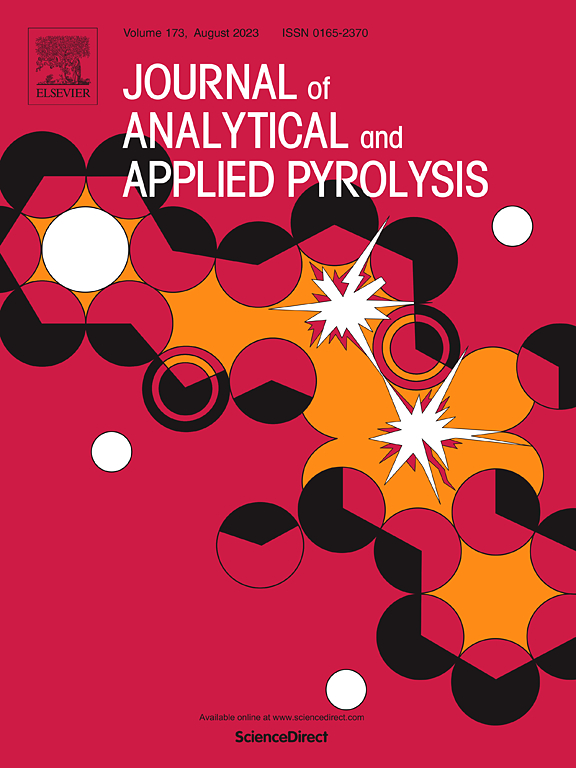Production of hydrochar fuel by microwave-hydrothermal carbonisation of olive pomace slurry from olive oil industry for combustion application
IF 5.8
2区 化学
Q1 CHEMISTRY, ANALYTICAL
引用次数: 0
Abstract
This work is the first investigation on microwave-assisted hydrothermal carbonisation (MHTC) of real olive pomace (OP) slurry from the olive oil industry to produce hydrochars with improved fuel properties for combustion applications (e.g., in boilers). Experiments were conducted based on the central composite design of response surface methodology with two main process variables: temperature (180–250 °C) and holding time (2–30 min). Severity factors (log R0) were calculated from the above variables and used to explain the process effect in a simpler way. Increasing the MHTC severity resulted in significant changes in the structure of OP (studied by FTIR and NMR analyses) as well as reductions in yield, bulk density, volatile matter, and ash content in the hydrochars. The high-severity hydrochar was positioned in the lignite zone (van Krevelen diagram). It also exhibited substantial reductions in the alkali index (86.53 %), slagging index (76.89 %), and fouling index (96.07 %) compared to the raw material. Overall, the best conditions for hydrochar production with improved combustion characteristics were found to be 250 °C for 30 min (HHV = 28.45 MJ/kg, energy densification ratio = 1.25, equilibrium moisture content = 31.1 mg/g, comprehensive combustibility index = 2.94 × 10−7%2 min−2 ºC−3). These properties indicate that high-severity hydrochars could be utilised as biofuels for energy applications.
通过微波水热碳化橄榄油工业中的橄榄渣浆生产水碳燃料,并将其应用于燃烧
这项研究首次对橄榄油工业中真正的橄榄渣(OP)浆料进行微波辅助水热碳化(MHTC),以生产出具有更佳燃料特性的水成渣,用于燃烧应用(如锅炉)。实验基于响应面方法的中心复合设计,有两个主要工艺变量:温度(180-250 °C)和保温时间(2-30 分钟)。根据上述变量计算出严重性因子(log R0),并用更简单的方法解释过程效应。提高 MHTC 的严重程度会导致 OP 结构发生显著变化(通过傅立叶变换红外光谱和核磁共振分析进行研究),并降低水炭素的产量、体积密度、挥发物和灰分含量。严重程度高的水炭位于褐煤区(van Krevelen 图)。与原料相比,它的碱指数(86.53 %)、结渣指数(76.89 %)和结垢指数(96.07 %)也大幅降低。总体而言,250 °C、30 分钟(HHV = 28.45 MJ/kg,能量致密化比率 = 1.25,平衡水分含量 = 31.1 mg/g,综合燃烧指数 = 2.94 × 10-7%2 min-2 ºC-3)是生产具有更好燃烧特性的水炭的最佳条件。这些特性表明,高硬度水煤浆可用作能源应用领域的生物燃料。
本文章由计算机程序翻译,如有差异,请以英文原文为准。
求助全文
约1分钟内获得全文
求助全文
来源期刊
CiteScore
9.10
自引率
11.70%
发文量
340
审稿时长
44 days
期刊介绍:
The Journal of Analytical and Applied Pyrolysis (JAAP) is devoted to the publication of papers dealing with innovative applications of pyrolysis processes, the characterization of products related to pyrolysis reactions, and investigations of reaction mechanism. To be considered by JAAP, a manuscript should present significant progress in these topics. The novelty must be satisfactorily argued in the cover letter. A manuscript with a cover letter to the editor not addressing the novelty is likely to be rejected without review.

 求助内容:
求助内容: 应助结果提醒方式:
应助结果提醒方式:


